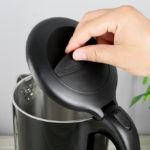Being a businesswoman and a housewife at the same time, while frying food, Ms. Hang often collects excess oil. Previously, women used to pour oil into jars and throw them in the trash. But since knowing how to use excess oil combined with sodium hydroxide (NaOH) to make soap, Ms. Hang has found an efficient way to handle excess oil that is both economical and environmentally friendly.
“After the soap is finished, it has the ability to create foam and clean well. If our family doesn’t like to use it for hand and foot washing, we can use it to clean the bathroom and toilet, which will be clean and fragrant,” Ms. Hang said.
Soap is completely safe when made according to the correct formula and method, but the ingredient sodium hydroxide (NaOH) can be dangerous if not handled carefully, so it is recommended that you follow safety procedures. You should wear goggles, gloves, masks, long-sleeved shirts, and pants to avoid splashing sodium hydroxide on your body.
When preparing sodium hydroxide at home, please choose a well-ventilated area. Do not mix sodium hydroxide indoors and in closed rooms, and do not let pets or small children come near the soap-making area. If soap or sodium hydroxide splashes onto the skin, immediately rinse with cold water.
The equipment used for making soap should be used separately and not for cooking to ensure safety and hygiene. If you accidentally taste a small amount of sodium hydroxide and soap that is not yet solidified, immediately rinse your mouth with lemon juice or vinegar.

Ms. Hang holding a jar of collected excess oil after several rounds of frying food.
Provided by the subject
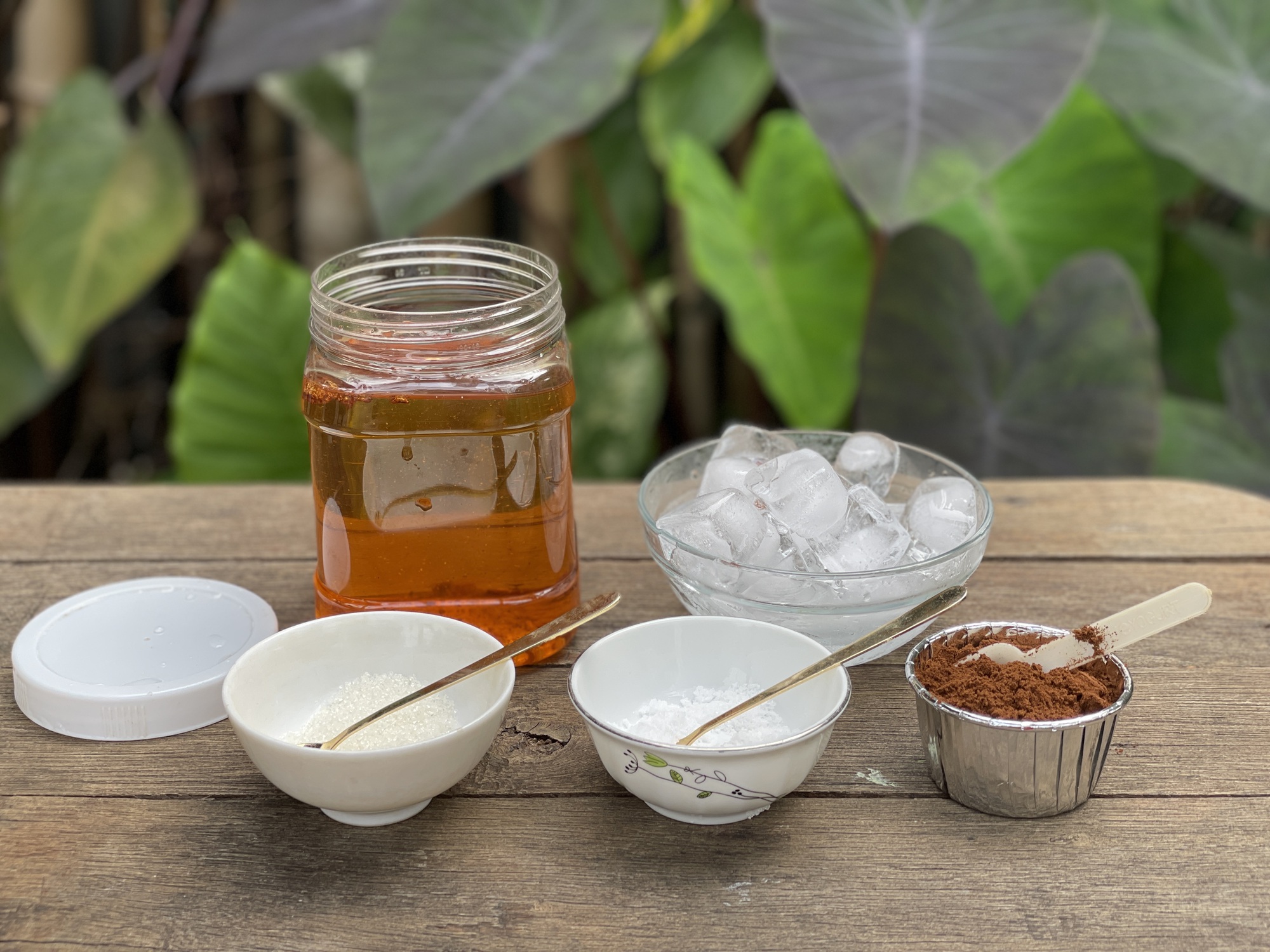
The ingredients include: 400g waste oil; 47g sodium hydroxide (NaOH); 150g water (preferably ice water); Salt, sugar (optional); Coffee powder or flour; Optional essential oil. Ms. Hang bought sodium hydroxide (NaOH) from e-commerce websites, coffee, and had essential oils available at home. The total cost is less than 50,000 Vietnamese dong.
Provided by the subject
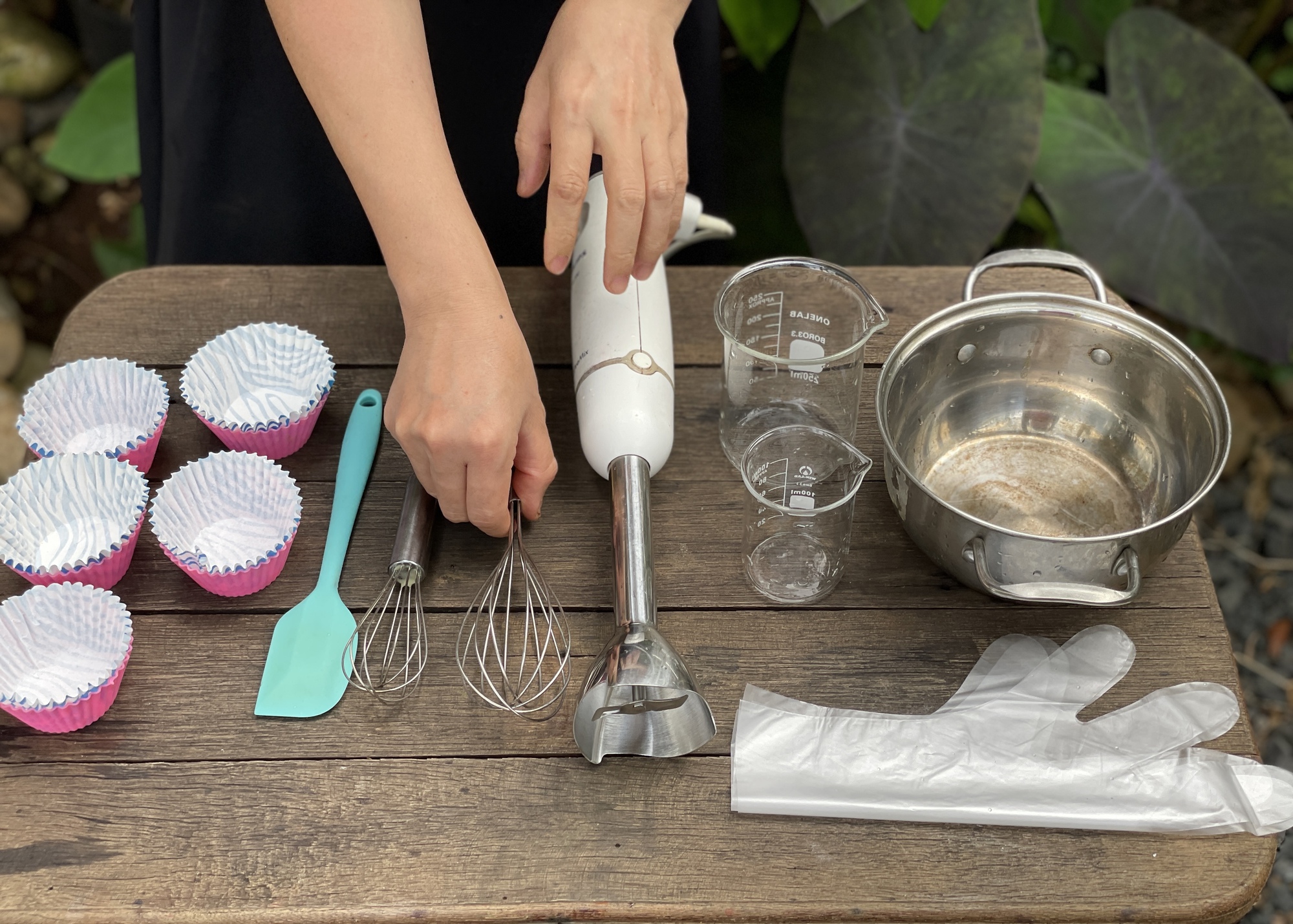
The necessary tools include: Container (can use stainless steel or plastic container, not aluminum container). Large cup and small cup for mixing sodium hydroxide. Hand blender (if not available, use whisk or egg beater). Flat spoon for scraping off all the soap mixture. Mold (use a silicone mold for easy removal, the soap will also look better). Gloves, mask (as there will be smoke when mixing sodium hydroxide).
Provided by the subject
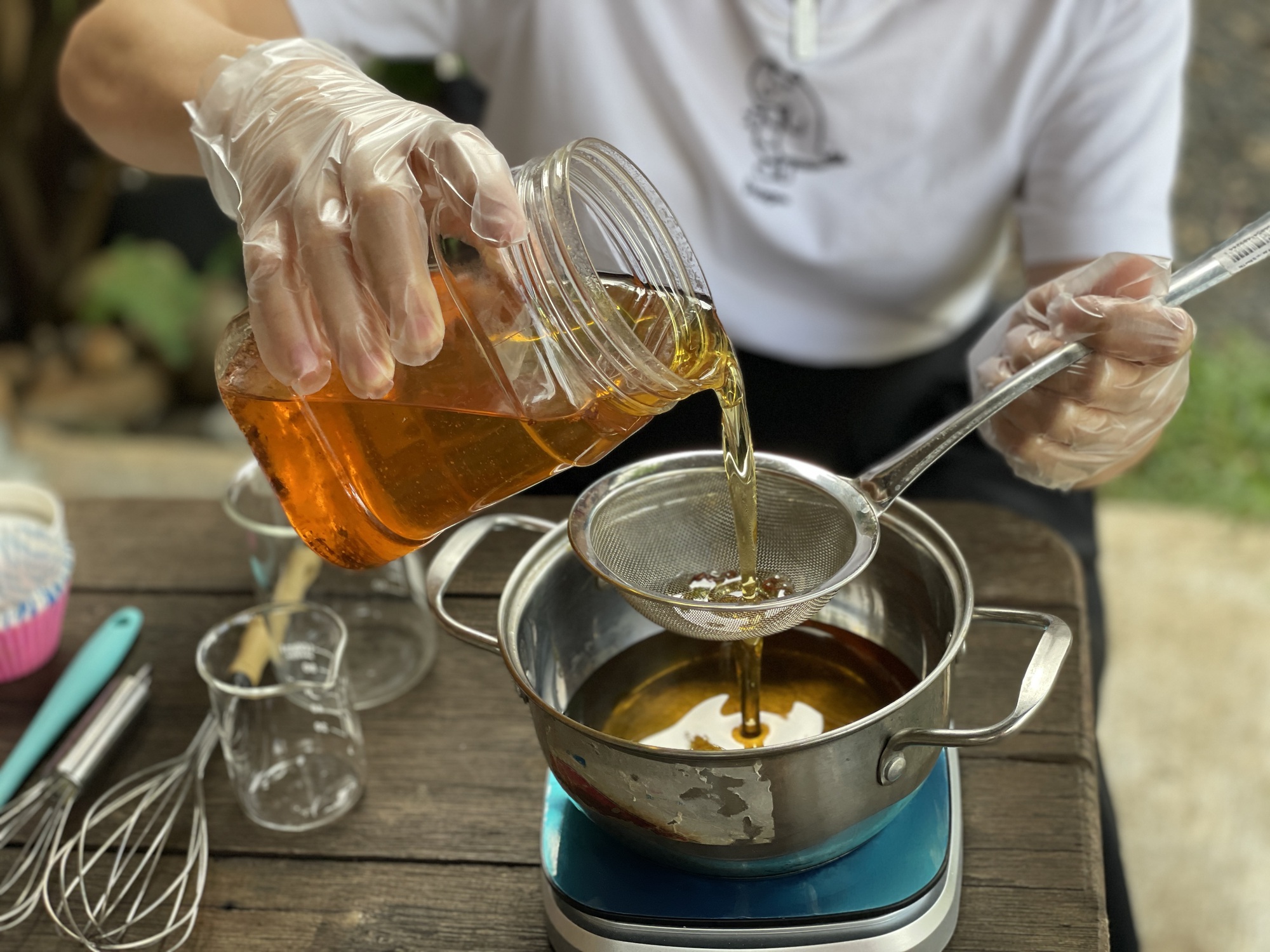
Step 1: Filter and weigh 400g of waste oil.
Provided by the subject

Step 2: Add 5 spoons of coffee powder or flour to the waste oil. Then mix the oil with the coffee to get a mixture of oil and coffee.
Provided by the subject
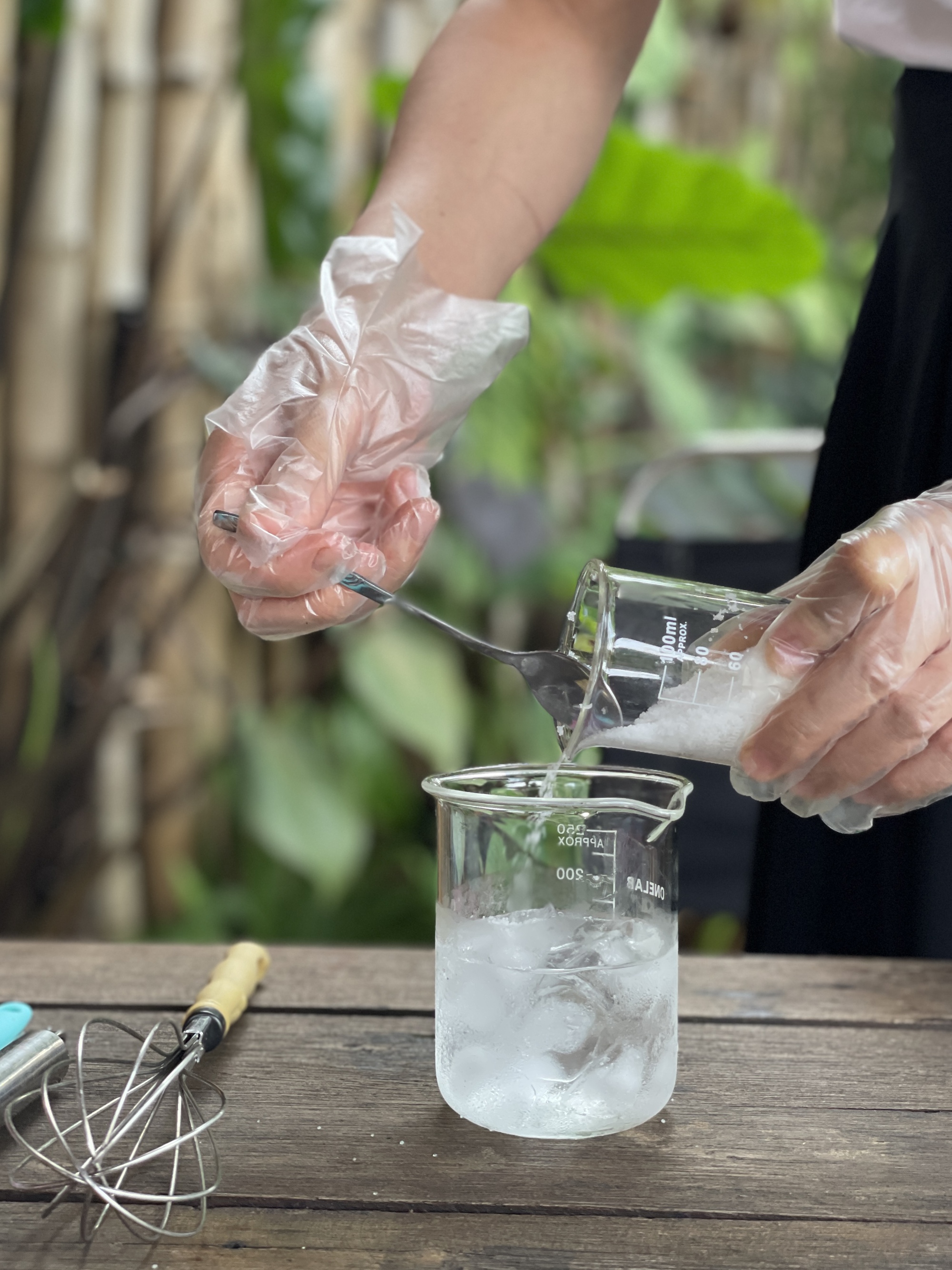
Step 3: Pour 47g of sodium hydroxide into the water, never the other way around. Stir well to dissolve all the sodium hydroxide, then you will get a sodium hydroxide solution (The sodium hydroxide solution will be very hot, so use ice water to reduce the temperature).
Provided by the subject
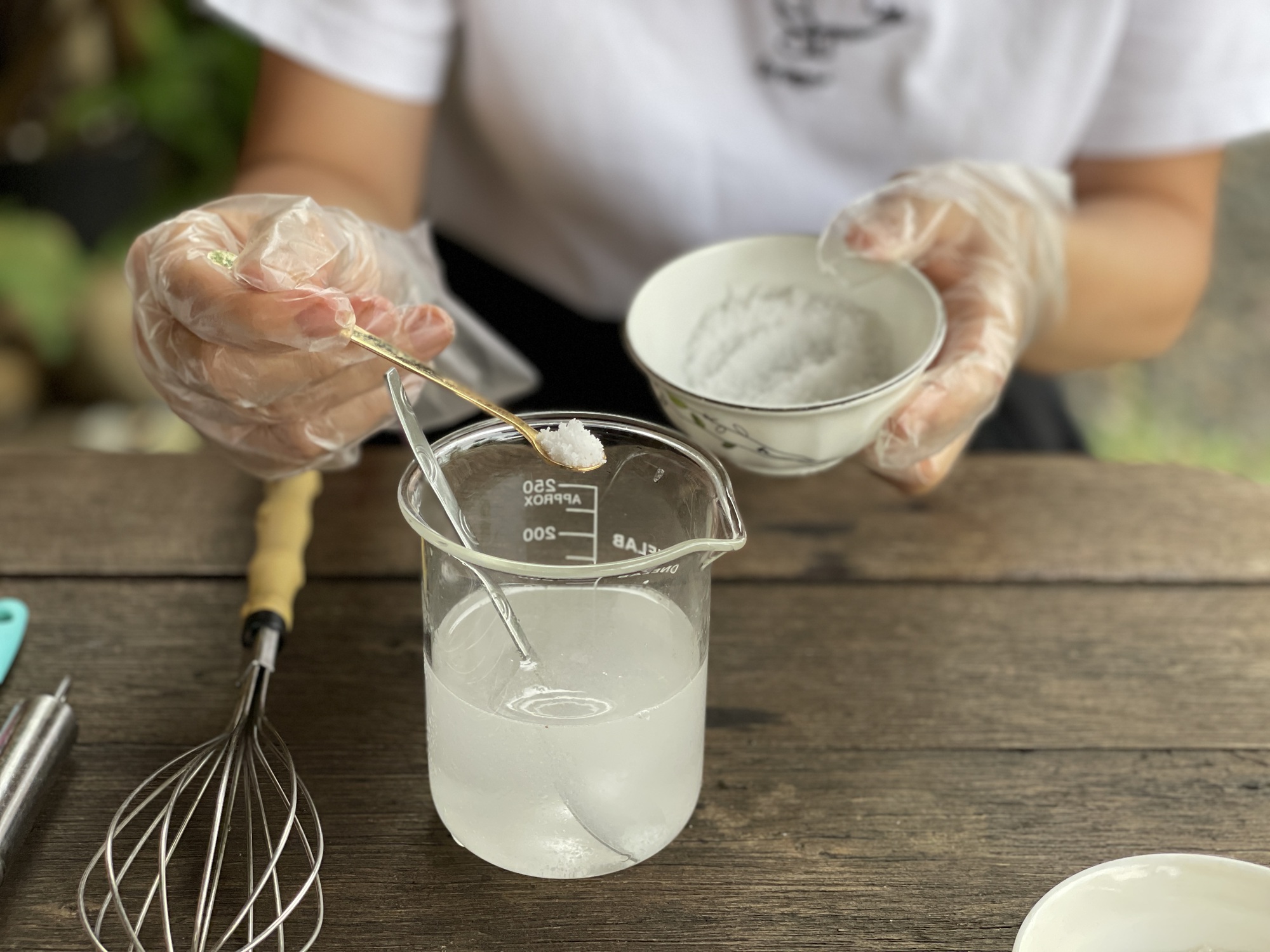
Step 4: Add 3 spoons of salt to the sodium hydroxide solution and stir until dissolve (Salt will make the soap harder). Step 4: Add another 3 spoons of sugar to the sodium hydroxide solution and stir well (Sugar will help the soap create better foam).
Provided by the subject
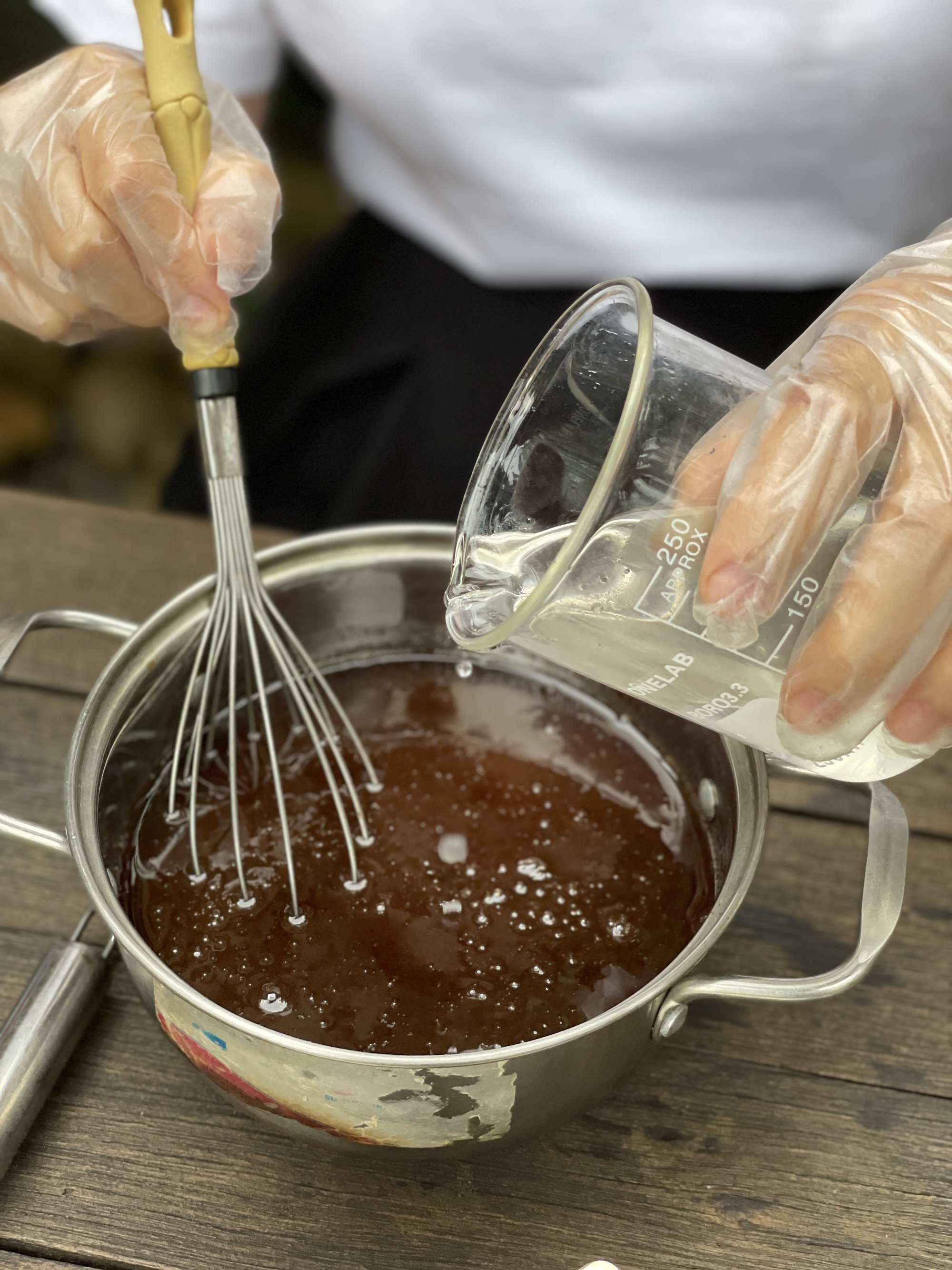
Step 5: Pour the sodium hydroxide solution into the oil-coffee mixture, never the other way around. Pour slowly while stirring to create a saponification reaction (The sodium hydroxide solution will react with the fatty substance to form soap and glycerin).
Provided by the subject
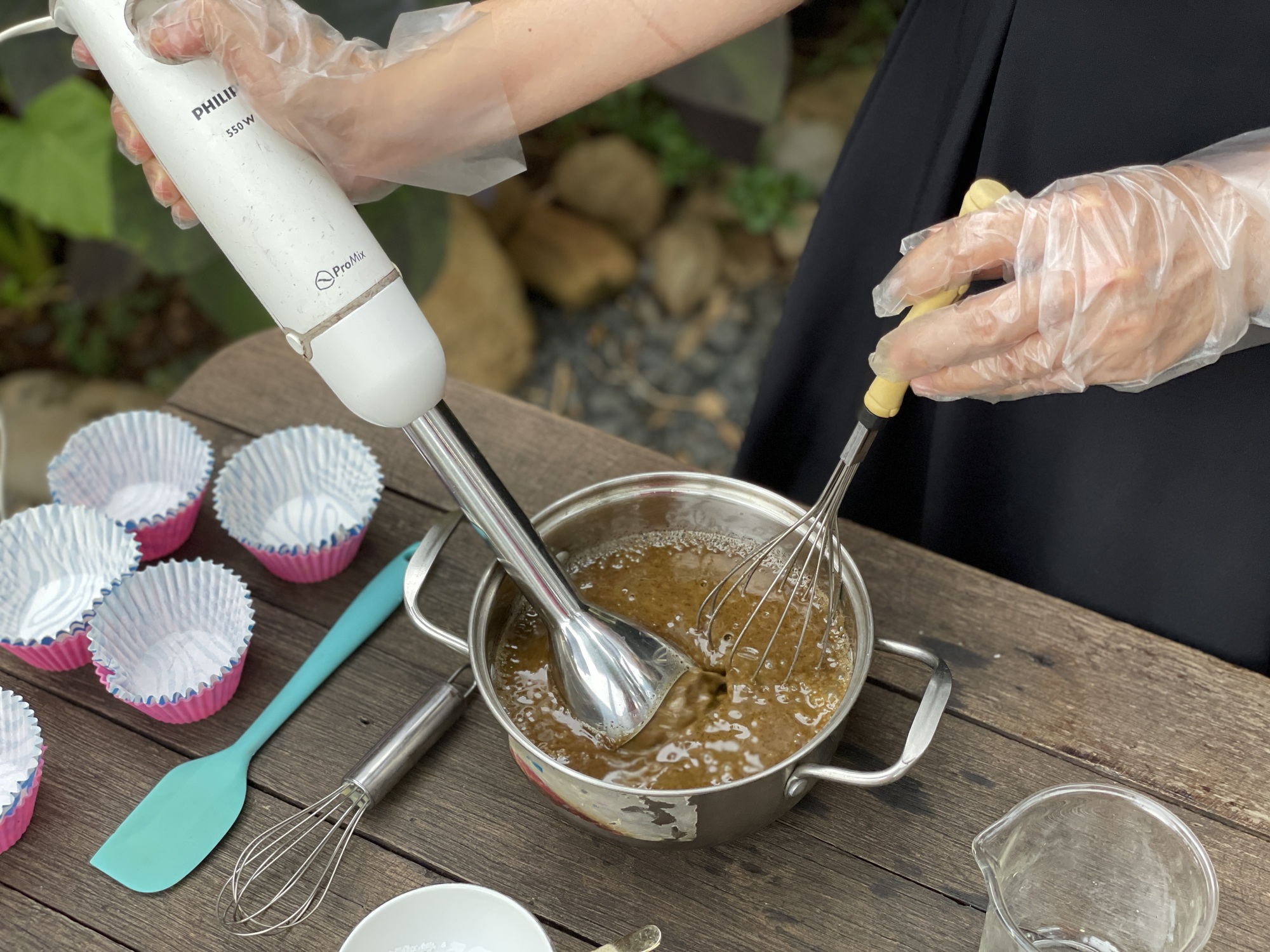
Step 6: If using a whisk, it will take about 30 minutes for the reaction to start. Using a blender will be faster, around 5 minutes for the solution to thicken. Beat until the mixture solidifies and forms patterns to show that the reaction has occurred, at this point, you can add essential oil for fragrance if desired.
Provided by the subject
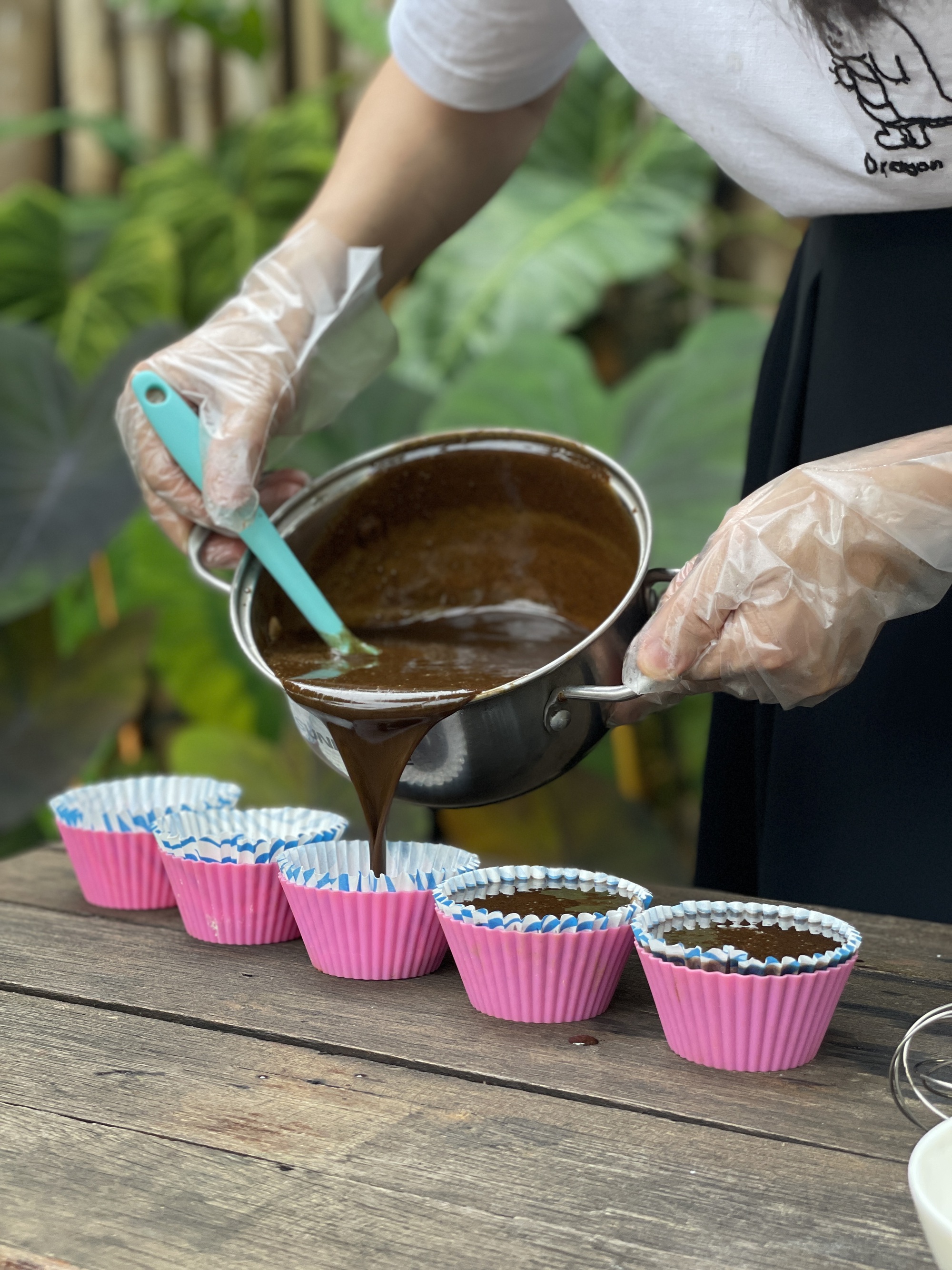
With 400g of waste oil, Ms. Hang was able to make about 9 bars of soap. At this point, the soap is still very soft, so let it sit for about 4 hours before moving.
Provided by the subject
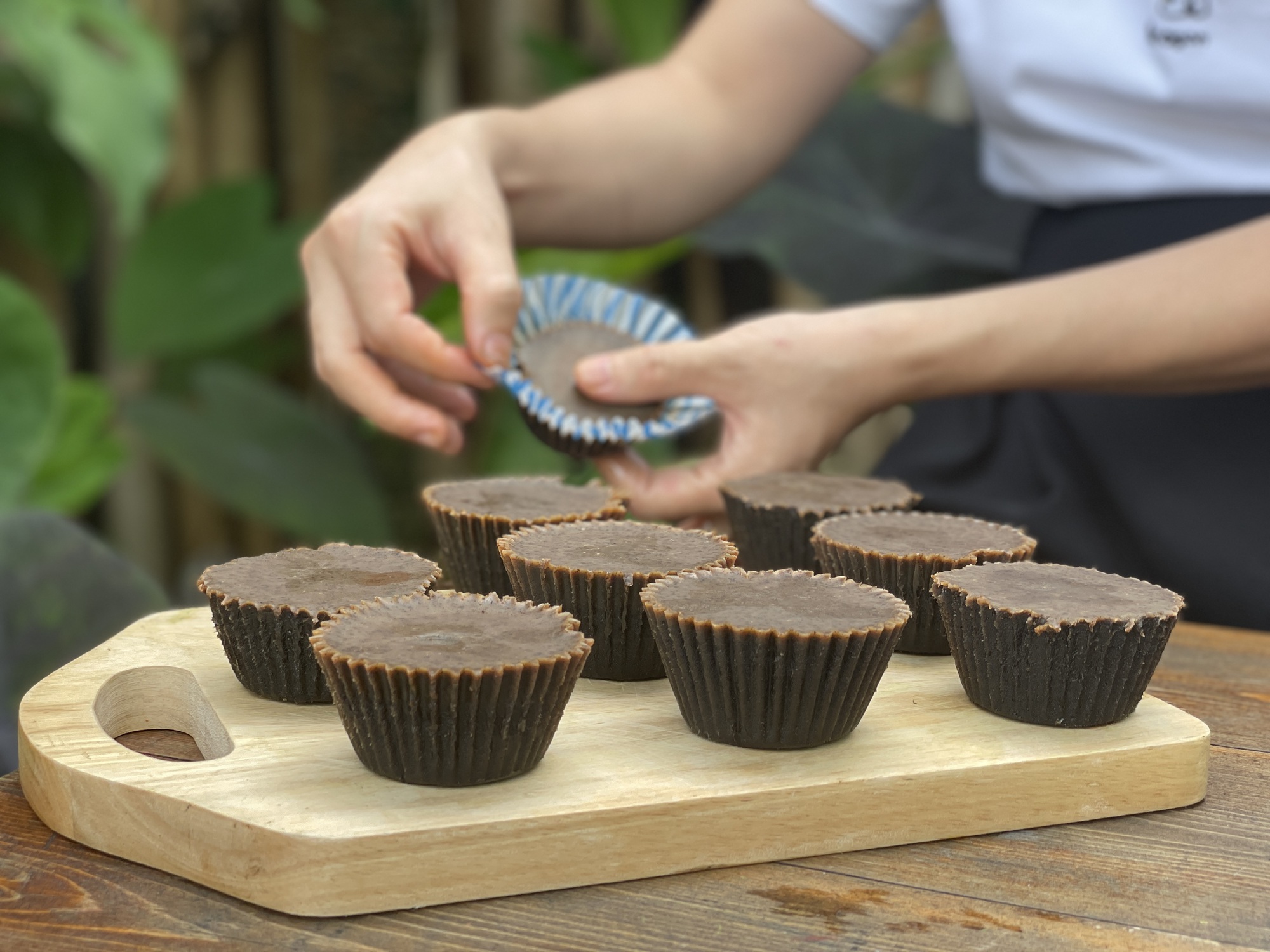
This is the soap after 1 week, it can be removed from the mold. Note that it should be left for another 4-6 weeks before using, as the saponification reaction is not yet complete.
Provided by the subject
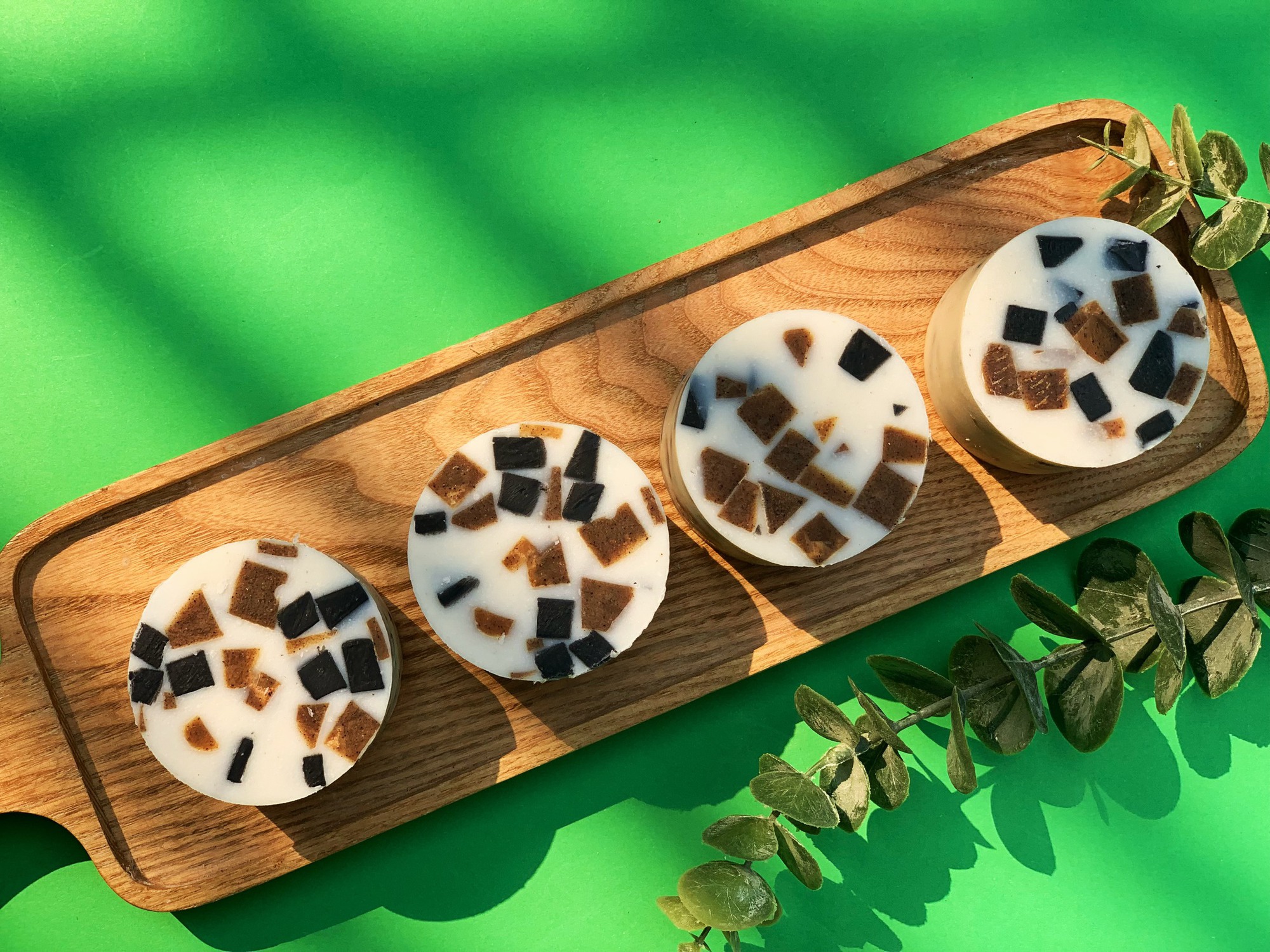
You can also make soap from coconut oil. The soap formula from coconut oil will be different from other cooking oils. The ratio of ingredients includes: 500g coconut oil; 86g NaOH; 190g water; 10-15g coffee powder/mud/mineral mud/charcoal powder; Essential oil (optional). This soap is very good for skin nourishment and effectively reduces back acne.
Provided by the subject


























